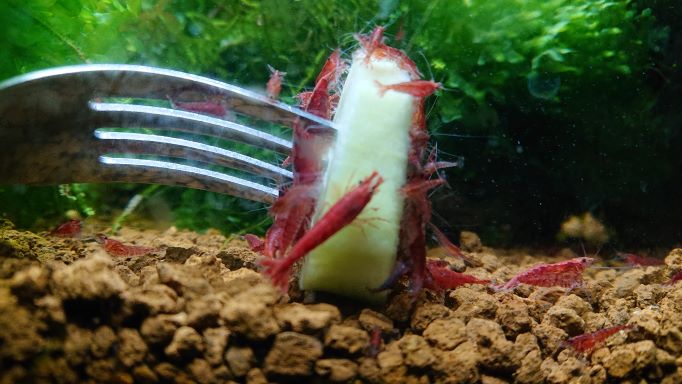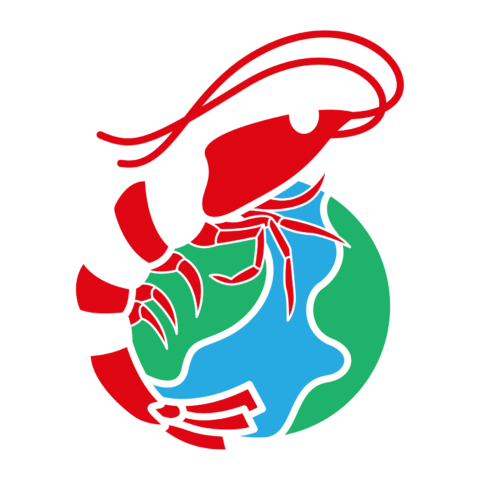Cherry shrimp are one of the most popular dwarf freshwater shrimp. They’re easy for beginner aquarists. But some people worry that the Cherry shrimp can be messy?
Cherry shrimp can be messy and create a messy tank when paired with particular tank mates. Their tank can appear messy because they don’t eat as much as their larger counterparts. Ensure to be on top of cleaning and clearing any poop and other debris to ensure the ideal environment.
This article will help you understand the Cherry shrimp’s unique characteristics and best care practices. Keep reading.
What To Know About Cherry Shrimp
Cherry shrimp are peaceful, easy-care invertebrates that feed on moss, algae, and plants. While some shrimp hardly move, the Cherry shrimp are busy and will even approach your hand when you reach into the water.
Caring for Cherry shrimp doesn’t have to be difficult if you know what to do. Below are tips on keeping them.
It’s Okay To House Cherry Shrimp in an Old Tank
The Cherry shrimp likes a mature tank. If you have a tank that housed fish or other shrimp but is now empty, this can be the perfect introductory tank. The Cherry shrimp are quite hardy and can do well with existing water, gravel, and features of a mature tank since they feed on brown and green algae.
Cherry shrimp like the following:
- Mosses
- Dense, live plants for hiding
- Small pieces of driftwood
- Cholla wood
- Algae
This YouTube video will help you set up the perfect tank for your Cherry shrimp:
Cherry Shrimp Come in Many Varieties
Cherry shrimp in the wild come in an array of colors, but the type you add to an aquarium is a particular red breed. These shrimp are graded according to the tone of red.
Some Cherry shrimp types:
- Common Cherry shrimp: They are clear with red spots and patches. These shrimp are the lowest grade of the Atyidae family of invertebrates.
- Painted Fire Red shrimp: These shrimp embody a deep, red color that appears fire-like against the green tank plants. As the highest grade of Cherry shrimp, the shrimp are completely red. The Painted Fire Red shrimp are busy and fun to watch as they scurry around the tank.
- Fire Red Shrimp: These shrimp are exclusive of selective breeding and don’t occur in the wild. They’re similar to a cow in the animal kingdom because they’re slow and content to graze. Their red color has no transparent parts.
- Sakura Cherry shrimp: These shrimp are of a higher grade than the common Cherry shrimp. Due to their hardy nature and low cost, they’re a favorite of many aquarists. The Sakura Cherry shrimp are fast breeders and keep the aquarium clean with their eating habits.
- High Sakura/Grade AA Red Cherry: These shrimp are more opaque than Sakura Cherry with a bold, intense red.
- Bloody Mary Red Cherry Shrimp: These shrimp are a recent addition. They have shorter noses. They originated from the Chocolate Shrimp. Furthermore, they’re the priciest of this species.
Your Tank Parameters Can Determine Your Cherry Shrimp’s Survival
The Cherry shrimp like to live in a tank with aquatic plants such as aquatic moss, green cabomba, baby tears. Other characteristics of the right tank environment are:
- 6.8-7.5 pH level
- Temperature range of 65-80°F, with 78°F degrees as the ideal
- kH at 0-10 and gH 4-14.
- TDS 80-200
- No traces of ammonia or nitrites
Cherry Shrimp Can Only Live With Non-Predatory Tank Mates
Because Cherry shrimp are so small, you don’t want tank mates to eat the shrimp. Choose the tank mates carefully as the Cherry shrimp are defenseless. The best environment is a tank to themselves, but you can add mates according to preference.
Freshwater snails (Ivory, Mystery, Gold Inca, Nerite, Malaysian Trumpet) are great tank mates. Small tetras, male betta fish, bristlenose plecos, cory catfish, and ghost shrimp are compatible with the Cherry shrimp.
You want to avoid predatory fish that’ll eat your shrimp.
Cherry Shrimp Are Omnivorous Scavengers
Cherry shrimp are notorious scavengers and will eat most types of algae. They’re omnivores, so they’ll dine on both plant matter and meat.
You can feed them a high-quality shrimp pellet and boiled vegetables such as spinach, lettuce, cucumber, zucchini, and carrots. Overfeeding will pollute your tank so pay close attention to how much they need and remove any excess food after one to two hours.

Conclusion
Cherry shrimp can be messy when they have too much food in the tank. You should monitor the excess food and remove it. However, they’re ideal as a starter shrimp for an aquarium and add a bold pop of red to the look.
Sources
- My Aquarium Club: Anyone Else Find Shrimp Really Messy?
- YouTube.com: How to: Setup an Aquarium for Cherry Shrimp [Beginner Shrimp Keeping]
- Shrimp Farm University: Red Cherry Shrimp (Neocaridina heteropoda) Grading – General
- Aquaticarts: Sakura Shrimp Care Guide
- Fishkeeping World: Cherry Shrimp Care, Facts, Colors & Breeding
- Fishkeeping World: Nerite Snails: The Definitive Care Guide
- Its A Fish Thing: 10 Best Tank Mates for Cherry Shrimp in 2021
- Tropical Fish Magazine: There’s Fire in My Tank! Keeping Fire Red Shrimp
- Tropical Fish Forums: Should I ‘dirty Up’ A New Tank For Cherry Shrimp?
Recent Posts
How Do Freshwater Shrimps Live? Freshwater shrimp are fascinating creatures that play a crucial role in aquatic ecosystems. They help maintain water quality by consuming algae and decomposing...
How Many Freshwater Shrimp Per Gallon? 4 Key Factors Freshwater shrimp are popular additions to aquariums, but many hobbyists wonder: how many shrimp can comfortably live in a gallon of water? The...

